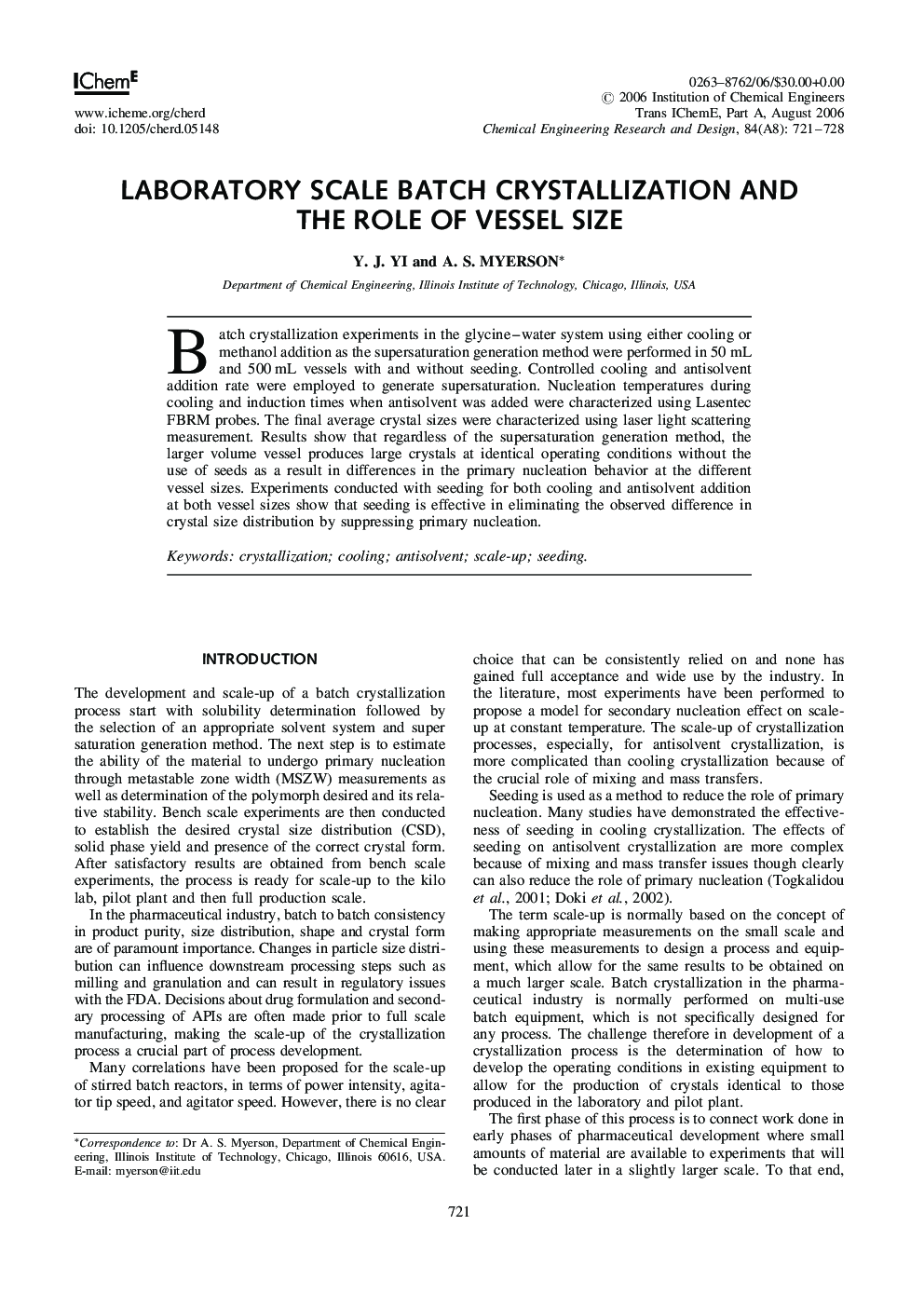| Article ID | Journal | Published Year | Pages | File Type |
|---|---|---|---|---|
| 622634 | Chemical Engineering Research and Design | 2006 | 8 Pages |
Abstract
Batch crystallization experiments in the glycine-water system using either cooling or methanol addition as the supersaturation generation method were performed in 50 mL and 500 mL vessels with and without seeding. Controlled cooling and antisolvent addition rate were employed to generate supersaturation. Nucleation temperatures during cooling and induction times when antisolvent was added were characterized using Lasentec FBRM probes. The final average crystal sizes were characterized using laser light scattering measurement. Results show that regardless of the supersaturation generation method, the larger volume vessel produces large crystals at identical operating conditions without the use of seeds as a result in differences in the primary nucleation behavior at the different vessel sizes. Experiments conducted with seeding for both cooling and antisolvent addition at both vessel sizes show that seeding is effective in eliminating the observed difference in crystal size distribution by suppressing primary nucleation.
Related Topics
Physical Sciences and Engineering
Chemical Engineering
Filtration and Separation
Authors
Y.J. Yi, A.S. Myerson,
